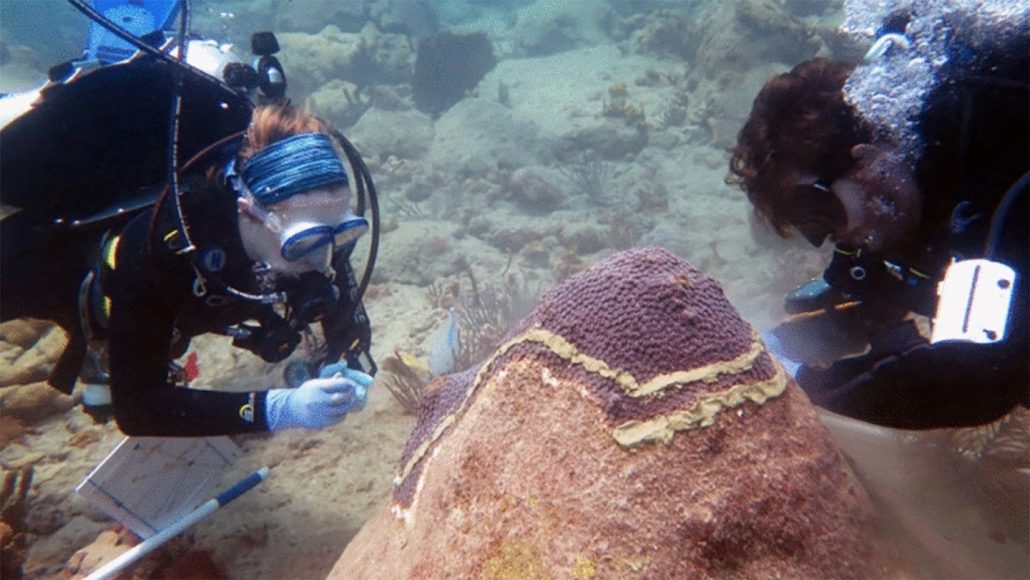Questions for “A common antibiotic might save some sick corals”

Divers testing treatments for a deadly coral disease apply chlorinated epoxy to great star corals off the coast of Florida.
E.N. Shilling, I.R. Combs and J.D. Voss/Scientific Reports 2021